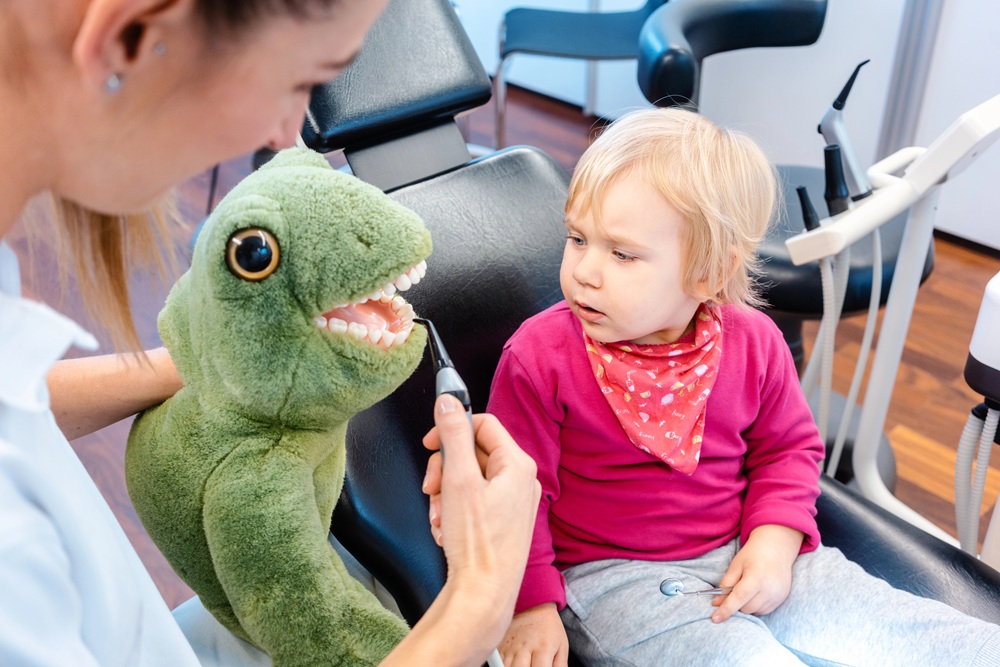
Your child’s first wiggly tooth is a rite of passage. That tiny gap in their smile marks a moment in time and an opportunity. It’s the perfect chance to start building a lifetime of good dental habits. But here’s the tricky part: many kids see brushing and flossing as a chore, not a choice.
That’s where creativity, consistency, and a little bit of fun come in. By starting young and making dental health an engaging part of daily life, you’re building their confidence, independence, and even their overall health.
Why Early Dental Education Matters
The habits your child builds in the first years of life have a ripple effect. According to the American Academy of Pediatric Dentistry, children who develop regular brushing and flossing routines before age six are far more likely to carry them into adulthood. On the flip side, skipping these early lessons can lead to cavities, gum disease, and costly treatments later on.
Dental health doesn’t just affect teeth, either. Research links poor oral hygiene to a higher risk of chronic illnesses such as heart disease and diabetes. For kids, dental pain can mean missed school days, difficulty eating, and lower self-esteem.
When parents make dental education a priority, they’re instilling the idea that caring for your body is a form of self-respect.
How to Teach Kids About Teeth Without Making It a Chore
1. Start With a Story
Children connect with narratives, so frame dental health as a story they can follow. Maybe the toothbrush is a superhero, fighting “plaque monsters” that hide after snack time. Or perhaps each tooth is a castle that needs guarding so it can shine bright and strong.
Books like Brush, Brush, Brush! by Alicia Padron or The Tooth Book by Dr. Seuss use rhyme and humor to help kids remember key habits. Reading these together before bedtime reinforces the message without feeling like a lecture.
Pro tip: Let your child “tell the story” back to you while brushing. This encourages creativity and keeps their mind engaged while they’re scrubbing away.
2. Make Brushing a Shared Event
If brushing feels like something they “have to do,” kids will resist it. But if it feels like a family ritual, it’s easier to stick with. Try brushing your teeth at the same time as your child, using the mirror together.
You can also create themed brushing times — “pirate brushing” where you talk like pirates for two minutes, or “dance brushing” where you do silly moves to a favorite song.
For younger children, try the “hand-over-hand” technique where you help guide their brush until they develop the dexterity to do it themselves.
3. Turn Learning Into Play

- Plaque-disclosing tablets: These chewable tablets color any remaining plaque so kids can see where they missed. It turns brushing into a treasure hunt.
- Tooth brushing apps: Apps like Brush DJ or Disney Magic Timer turn brushing into a mini-game and play music for exactly two minutes.
- Stuffed animal practice: Give your child a toy with big teeth (or draw them on paper) and let them “teach” the toy how to brush. Teaching someone else helps them remember the steps.
4. Keep Explanations Simple and Visual
When you explain why brushing matters, avoid overwhelming them with technical terms. You might say:
- “Food leaves sugar bugs on our teeth, and the toothbrush chases them away.”
- “If we don’t brush, the bugs make tiny holes in our teeth called cavities.”
Visual experiments can make the lesson stick. For example:
- Place a hard-boiled egg in soda overnight to show how sugar can stain teeth.
- Dip a piece of chalk in vinegar to show how acid weakens enamel.
5. Build Comfort With the Dentist
Dental visits can be intimidating. Help your child feel safe and curious about the process:
- Read together: Books like Just Going to the Dentist by Mercer Mayer show what happens step-by-step.
- Role-play at home: Pretend to be the dentist and count their teeth. Let them be the dentist and check your teeth.
- Choose a pediatric-friendly practice: Many dental offices offer colorful décor, small prizes, and child-sized equipment.
6. Address Dental Costs Without Skipping Care
Even with good insurance, dental care can add up. Regular checkups, cleanings, sealants, and occasional treatments all come with a price tag.
For families looking to make costs more manageable, some clinics offer flexible options like monthly installments. This allows you to spread payments out without delaying important care. You can also:
- Ask your dentist about in-house membership plans for preventive services.
- Schedule treatments across different months to spread out costs.
- Look for community dental clinics that offer reduced rates for children.
Making a plan for expenses ahead of time helps ensure your child gets consistent, high-quality care without last-minute stress.
7. Match Habits to Developmental Stages
Dental education looks different depending on your child’s age:
- Toddlers (1–3 years): Focus on helping them accept brushing as part of daily life. Keep sessions short and playful.
- Preschoolers (3–5 years): Encourage independence by letting them try brushing first, then “checking” their work.
- Early Elementary (6–8 years): Teach proper flossing technique and talk about the importance of healthy snacks for strong teeth.
- Tweens (9–12 years): Connect dental care to things they care about — like avoiding bad breath or keeping teeth white for school pictures.
8. Encourage Healthy Eating for Healthy Teeth
Dental education is more than brushing and flossing. Diet matters, too. Offer snacks like cheese, yogurt, carrot sticks, or apple slices. These not only provide nutrients but also help clean teeth naturally.
Avoid making sugary treats completely “forbidden,” which can make them more tempting. Instead, teach balance: “It’s okay to have sweets sometimes, but we brush afterward to keep teeth strong.”
9. Celebrate Success
A little recognition goes a long way. Try:
- A “no-cavity club” certificate after dentist visits.
- Smile photos every six months to show progress.
- Let your child choose a new toothbrush when they hit a brushing milestone.
Celebrating reinforces the idea that dental care is something to be proud of.
The Long-Term Payoff
The benefits of early dental education go beyond a cavity-free childhood. Kids who grow up with these habits are more likely to have healthier gums, stronger teeth, and better overall health as adults. They’re also more likely to feel confident in their smiles, which can affect everything from friendships to job interviews.
Most importantly, you’re teaching them a skill they’ll carry for life: how to care for themselves in a way that is both practical and empowering.

Leave a Reply